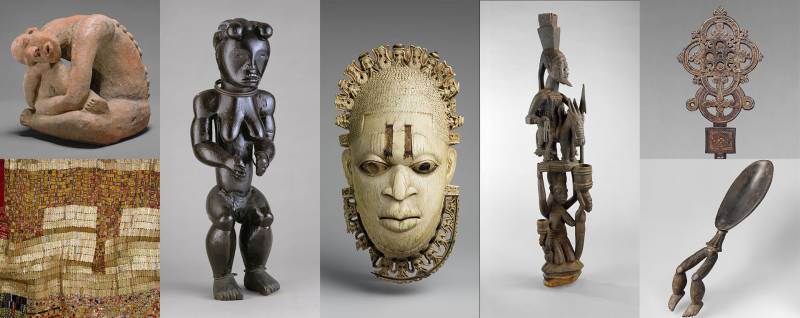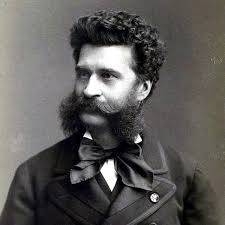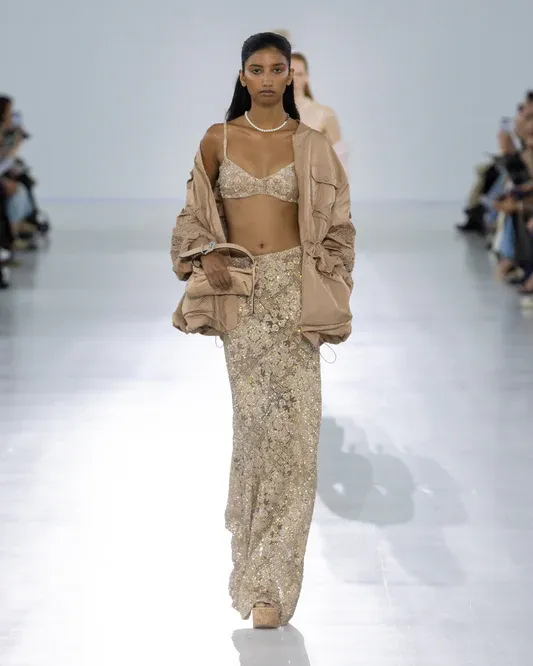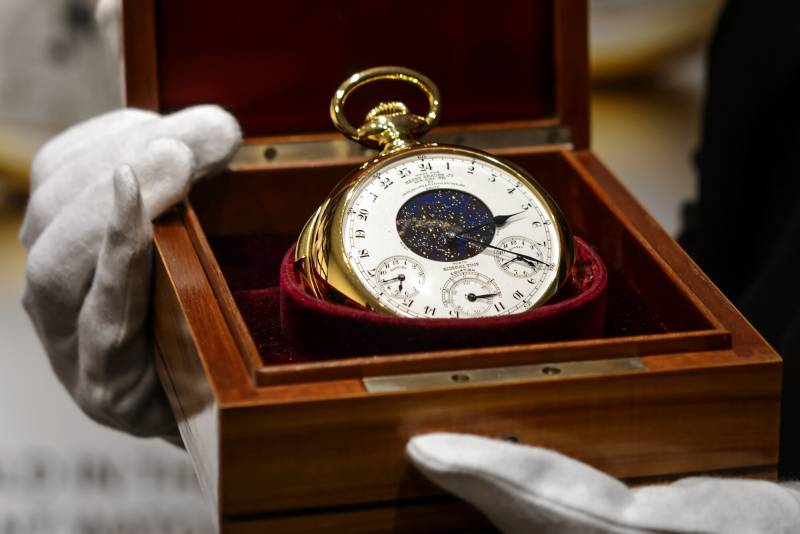The galleries for African Art (Galleries 350, 351, 352) in The Michael C. Rockefeller Wing have temporarily closed in preparation for the exciting new renovation project which will re-envision these collections for a new generation of visitors.
Works from across the African subcontinent span fired clay figures shaped in present-day Nigeria as early as 500 B.C. to the fiber creation Bleu no. 1 (2014) by contemporary innovator Abdoulaye Konat. Major forms of visual expression surveyed relate to traditions of portraiture, dynastic succession, generational rites of passage, ancestor veneration, healing and divination, and theatrical performance. Their authors have contributed to major social and cultural developments, including the flourishing of urban centers such as ancient Jenne, evident in devotional sculpture sponsored by its citizenry; the arrival of Islam through trans-Saharan trade reflected in decorative arts ranging from tunics to architectural design; the early embrace of Christianity by Ethiopian monarchs and their sponsorship of liturgical works; the dawn of coastal trade with Europe and the exchange of exotic presentation pieces wrought from locally sourced ivory for imported luxury materials; a transformation in representation and the development of modernism in the West; and dynamically resilient historical traditions that endure into the present day.
In 1969 Nelson Rockefeller announced the gift of his collection of some five hundred works from sub-Saharan Africa to The Met. These were mostly figurative sculpture from West and Central Africa. The Michael C. Rockefeller Wing, which was built to display the collection, opened to the public in 1982. Additional gifts have deepened the collection and expanded its parameters, reflecting the importance of recognizing the innovative nature of historical traditions in our own time and major idioms of visual expression ranging from textiles to Ethiopian Christian art and decorative arts from southern Africa.
Since its founding, the Department of the Arts of Africa, Oceania, and the Americas has developed an extensive program of African art exhibitions. Beginning with The Buli Master and Other Hands (1980), these have examined the significance of landmarks of its permanent collection. Sustained research projects assembling international loans, such as the current Sahel: Art and Empires on the Shores of the Sahara, have regularly advanced and expanded understanding of major thematic and historical subjects.
The online collection features high-resolution, open-access images of works in the collection, along with cultural and chronological information. These object records”an ongoing research project”also provide data on the history of works from the time of their creation to their acquisition by the Museum.
For further reading on the history of the department, seeMaking The Met: 1870-2020 and The Nelson A. Rockefeller Vision: Arts of Africa, Oceania, and the Americas.
Works in the collection are housed in The Michael C. Rockefeller Wing, a forty-thousand-square-foot space on the south side of the Museum. Galleries within the wing are organized geographically.
Sub-Saharan Africa's outstanding visual traditions are represented through works from West, Central, East and Southern Africa. Highlights of the collection include a rich array of sculptural and textile traditions developed in the Sahel from the twelfth through mid-twentieth centuries by Jenne, Tellem, Dogon, and Bamana artists in present-day Mali. These aesthetics encompass the fluid plasticity of ancient terracotta figures, crisp graphic linearity of human and mythical subjects carved from wood, and deliberately ambiguous accumulations of natural matter that harness life force.
Insignia of the wealth and authority from an array of West African centers including Akan, Fon, Yoruba, Edo, and Grassfields polities represent the ingenious translation of precious gold, silver, glass beads, brass, and ivory by court artists into distinctive prestige arts from Co´te d'Ivoire, Ghana, Republic of Benin, Nigeria, and Cameroon. At their most monumental, the ambitions of regional leaders take the forms of an early-twentieth-century Cameroonian throne wrapped in beadwork commissioned by Njoutou of Bansoa and architectural elements carved by the celebrated Yoruba master Olowe of Ise for the palaces of Yoruba sovereigns in Nigeria.
The complexity of Central African religious practices developed in Angola and the Democratic Republic of the Congo are evoked through: crucifixes produced for sixteenth- century Kongo aristocratic converts to Christianity; nineteenth-century minkisi (power objects) consecrated by Kongo, Songye, and Luluwa banganga (priests) to harness spiritual engagement in healing and the maintenance of law and order; and ceremonial seat of office and staffs of leadership that evoke the role of legendary culture bearers in the establishment of enlightened governance by Luba and Chokwe communities.
A diverse array of culturally distinct sculptural traditions pay tribute to influential men and women celebrated for their contributions to society. Among these idealized representations are highly abstracted interpretations of Oron and Fang lineage founders depicted in a series of interconnected forms for familial altars in Nigeria and Gabon; expressive seated and animated leaders commissioned of themselves by Grassfields chiefs in Cameroon; the relatively naturalistic sixteenth-century busts carved in ivory and cast in brass commemorating queen mothers and obas, or kings, at the Court of Benin in Nigeria; and highly refined, cultivated, and introspective figures of Hemba sovereigns from the Democratic Republic of the Congo who petitioned being thus memorialized in their successors' dreams.
The innovative brilliance of decorative arts produced over the last century are evident in traditions ranging from the complex graphic design embroidered and applied to cloth woven from raffia palm leaves as wealth and ceremonial garments produced by Kuba women to those of intimate personal artifacts carved by Nguni and Swazi sculptors in southern Africa forms, from refined headrests to exuberant prestige receptacles.




